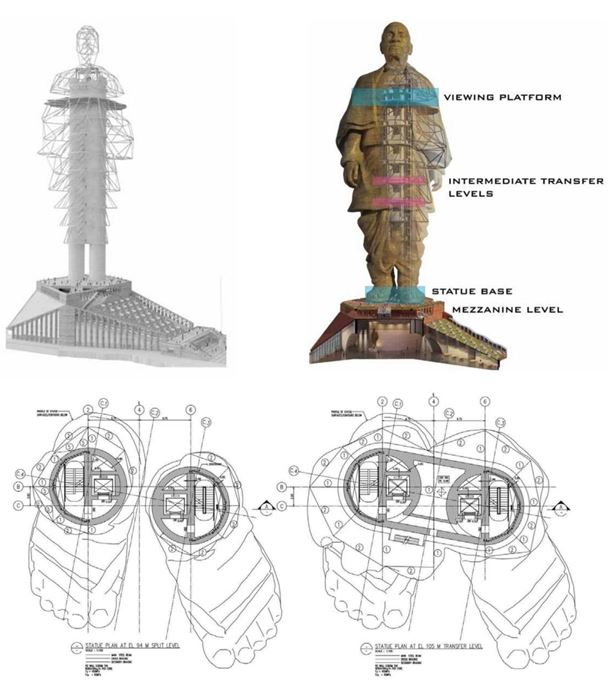Structural design features of the world’s tallest statue: The Statue of Unity.
The ‘Statue of Unity’ is dedicated to the Iron Man of India, Sardar Vallabhbhai Patel.
The height of Statue 182 meters. The slenderness ratio varies from 16 to 19.
Structural system: Two partly joined cylindrical composite core surrounded by a cantilevered structural steel frame to support external cladding.
Cylindrical core used for lifts and stairs. The diameter of the core wall is approx. 10 m.
These cores are connected to wing walls to distribute the load to the foundation mat.
Wind load governs the lateral load design. Statue is designed to resist wind speed of 50m/s. The design also includes a 3-second gust.
Two Tuned Mass Dampers of 250 tonnes were used at the chest level to control sway in high wind.
The site comes under seismic zone III. However (code +1) philosophy is used. Therefore it is designed for seismic zone IV.
Mat foundation is used considering hard rock site condition. And rock anchors are the solution to tension and uplift due to lateral load.
Source: CTBUH Research Paper – William Howell; Jairam Panch; Mandar Nadkarni; James

